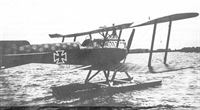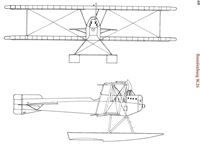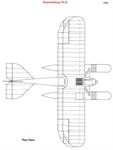
Описание
Страна: Германия
Год: 1917
Fighter
Варианты
- Hansa-Brandenburg - D.I/KD - 1916 - Германия
- Hansa-Brandenburg - KDD - 1916 - Германия
- Hansa-Brandenburg - KDW - 1916 - Германия
- Hansa-Brandenburg - W.11 - 1916 - Германия
- Hansa-Brandenburg - C.II / K - 1917 - Германия
- Hansa-Brandenburg - W.25 - 1917 - Германия
- Phonix - C.I - 1917 - Австро-Венгрия
- Phonix - D.I/D.II/D.III - 1917 - Австро-Венгрия
- Phonix - D.IV / 20.24 / 20.25 - 1918 - Австро-Венгрия
- O.Thetford, P.Gray German Aircraft of the First World War (Putnam)
- W.Green, G.Swanborough The Complete Book of Fighters
- C.Owers Hansa-Brandenburg Aircraft of WWI Vol.2: Biplane Seaplanes (A Centennial Perspective on Great War Airplanes 18)
- J.Herris German Seaplane Fighters of WWI (A Centennial Perspective on Great War Airplanes 2)
- M.Dusing German Aviation Industry in WWI. Volume 1 (A Centennial Perspective on Great War Airplanes 84)
-
C.Owers - Hansa-Brandenburg Aircraft of WWI. Volume 2 - Biplane Seaplanes /Centennial Perspective/ (18)
The final development of the KDW configuration was the W.25. It has three-color naval hexagonal fabric on the upper surfaces; conventional interplane struts replaced the 'star-strut' arrangement of the KDW.
-
J.Herris - German Seaplane Fighters of WWI /Centennial Perspective/ (2)
The final development of the KDW configuration was the W25. It has three-color naval hexagonal fabric on the upper surfaces; conventional interplane struts replaced the 'star-strut' arrangement of the KDW.
-
J.Herris - German Seaplane Fighters of WWI /Centennial Perspective/ (2)
The Brandenburg W25 was the final attempt to improve the KDW by replacing the heavy star-struts with conventional wing bracing and installing ailerons on all four wings. It was not considered for production due to the great success of the two-seat Brandenburg W12. Power was a 150 hp Benz Bz.III.
-
M.Dusing - German Aviation Industry in WWI. Volume 1 /Centennial Perspective/ (84)
The W.25 had the fixed upper vertical fin of the late-production KDW, but differed in having ailerons on all four wings, which also featured increased span and area. These changes likely improved its handling characteristics, but not enough for a production order.
-
C.Owers - Hansa-Brandenburg Aircraft of WWI. Volume 2 - Biplane Seaplanes /Centennial Perspective/ (18)
This front view of the W.25 shows the careful attention to minimum frontal area and streamlined nose entry to minimize drag.
-
C.Owers - Hansa-Brandenburg Aircraft of WWI. Volume 2 - Biplane Seaplanes /Centennial Perspective/ (18)
The W25 had the fixed upper vertical fin of the late-production KDW, but differed in having ailerons on all four wings, which also featured increased span and area. These changes likely improved its handling characteristics, but not enough for a production order.
-
C.Owers - Hansa-Brandenburg Aircraft of WWI. Volume 2 - Biplane Seaplanes /Centennial Perspective/ (18)
Brandenburg W.25 SVK Drawing
-
C.Owers - Hansa-Brandenburg Aircraft of WWI. Volume 2 - Biplane Seaplanes /Centennial Perspective/ (18)
Brandenburg W.25 Factory Drawing
O.Thetford, P.Gray German Aircraft of the First World War (Putnam)
Brandenburg W 25
Further development of K.D.W. single-seat seaplane with normal interplane bracing. Only one example was constructed, No. 2258, first with ailerons on top wing only, later (as illustrated) with ailerons at all wingtips connected by a link strut. Engine, 150 h.p. Benz Bz III. Span, 10.4 m. (34 ft. 1 1/2 in.). Length, 8.8 m. (28 ft. 10 1/2 in.). Height, 3.45 m. (11 ft. 3 7/8 in.). Area, 36.53 sq.m. (395 sq.ft.). Weights: Empty, 918 kg. (2,221 lb.). Loaded, 1,182 kg. (2,600 lb.). Speed, 160 km.hr (100 m.p.h.). Climb, 1,000 m. (3,280 ft.) in 6 1/2 min. Duration, 2 1/2 hr. Armament, two Spandau machine-guns.
Описание:











